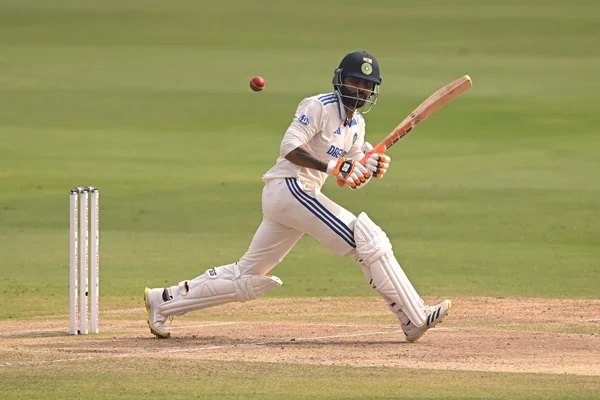
Cricket has witnessed numerous personalities who have left indelible marks on the sport, and among these influential figures, Reddy Anna stands out as a remarkable individual whose contributions to cricket analysis and commentary have revolutionized how enthusiasts understand the game. This comprehensive exploration delves into the significance of Reddy Anna in contemporary cricket discourse and examines the multifaceted impact of his analytical approach on the sport.
The Rise of Cricket Analytics: Where Reddy Anna Leads
Modern cricket has evolved far beyond traditional gameplay, embracing sophisticated analytical frameworks that provide deeper insights into player performance, match dynamics, and strategic decision-making. Reddy Anna has emerged as a pioneering voice in this transformation, offering unique perspectives that bridge the gap between conventional cricket wisdom and contemporary data-driven analysis.
The cricket landscape today demands more than just basic statistics and scorecards. Fans, analysts, and professionals seek comprehensive breakdowns that reveal the intricate patterns underlying every match, every player’s performance, and every strategic move. This is precisely where Reddy Anna’s expertise becomes invaluable, providing thorough examinations that illuminate aspects of cricket that might otherwise remain hidden.
Understanding Cricket Through Advanced Metrics
Contemporary cricket analysis involves multiple layers of complexity that extend well beyond traditional batting averages and bowling figures. The modern approach encompasses situational analysis, pressure performance metrics, pitch condition assessments, and psychological factors that influence player behavior during crucial moments.
Reddy Anna has consistently demonstrated proficiency in interpreting these complex metrics, translating sophisticated data into accessible insights that benefit both seasoned cricket followers and newcomers to the sport. His analytical methodology incorporates various elements including weather conditions, ground dimensions, historical performance data, and team composition strategies.
The evolution of cricket statistics has introduced concepts such as strike rate variations across different phases of play, bowling economy rates under pressure situations, and fielding efficiency measurements that provide comprehensive pictures of player contributions. These advanced metrics require skilled interpretation to extract meaningful conclusions about team strategies and individual performances.
Technical Aspects of Modern Cricket Analysis
Cricket analysis in the contemporary era involves examining multiple variables simultaneously to understand match outcomes and player performances. The technical framework includes assessing batting strike patterns across different overs, analyzing bowling variations in response to match situations, and evaluating fielding placements that maximize defensive efficiency.
Reddy Anna approaches cricket analysis with meticulous attention to these technical details, ensuring that every aspect of gameplay receives appropriate consideration. His methodology involves breaking down matches into distinct phases, examining how different players perform under varying pressure levels, and identifying patterns that might predict future performance trends.
The analytical process also encompasses understanding pitch behavior throughout match duration, weather impact on gameplay strategies, and historical performance data that provides context for current performances. These elements combine to create comprehensive analytical frameworks that offer valuable insights into cricket’s strategic dimensions.
Strategic Insights and Match Predictions
Effective cricket analysis requires understanding strategic elements that influence match outcomes beyond individual player statistics. Team composition decisions, batting order selections, bowling rotations, and fielding arrangements all contribute to match results in ways that traditional statistics might not fully capture.
The analytical approach championed by Reddy Anna incorporates these strategic considerations, examining how different tactical decisions impact match flow and ultimate outcomes. This includes analyzing captain decision-making patterns, understanding how pitch conditions influence strategic choices, and evaluating risk-reward calculations that teams make during crucial match moments.
Match prediction accuracy depends on synthesizing multiple information sources including recent form trends, head-to-head historical data, current team compositions, and environmental factors that might influence gameplay. The complexity of these predictions requires sophisticated analytical frameworks that can process multiple variables simultaneously.
Player Performance Evaluation Beyond Traditional Statistics
Modern cricket demands evaluation methods that extend beyond conventional statistics to capture the full spectrum of player contributions. This includes assessing performance under pressure situations, analyzing consistency across different match formats, and understanding how individual performances contribute to team success.
Reddy Anna emphasizes comprehensive player evaluation that considers situational performance variations, examining how players respond to different match pressures and environmental conditions. This approach provides more nuanced understanding of player capabilities and potential future performance trends.
The evaluation process includes analyzing performance patterns across different venues, understanding how players adapt to varying pitch conditions, and assessing psychological factors that influence performance during high-pressure situations. These considerations provide deeper insights into player reliability and potential impact on team success.
Technology Integration in Cricket Analysis
Contemporary cricket analysis increasingly relies on technological tools that provide detailed performance data and visual representations of gameplay patterns. These technologies enable analysts to examine aspects of cricket that were previously difficult to quantify or analyze systematically.
The integration of technology in cricket analysis includes video analysis systems that track ball trajectories, player movement patterns, and strategic positioning throughout matches. These systems generate vast amounts of data that require skilled interpretation to extract meaningful insights about performance trends and strategic effectiveness.
Data visualization tools have become essential for presenting complex analytical findings in accessible formats that enable quick understanding of key insights. The effective use of these tools requires combining technical proficiency with deep cricket knowledge to ensure that analytical presentations communicate valuable information clearly.
Impact on Cricket Commentary and Discussion
The analytical approach exemplified by Reddy Anna has significantly influenced how cricket commentary and discussion have evolved in recent years. Commentary now incorporates sophisticated analytical elements that provide audiences with deeper understanding of match dynamics and strategic considerations.
This evolution has elevated the quality of cricket discourse, moving beyond superficial observations to include substantive analysis that enhances viewer understanding and appreciation of the sport’s complexity. The analytical approach provides frameworks for discussing cricket that acknowledge the multifaceted nature of modern gameplay.
Cricket discussion forums, social media platforms, and traditional media outlets have all benefited from this analytical evolution, with more informed discussions that contribute to broader understanding and appreciation of cricket’s strategic and technical dimensions.
Future Directions in Cricket Analysis
The future of cricket analysis promises continued evolution as new technologies and analytical methodologies emerge. Machine learning applications, predictive modeling systems, and advanced statistical techniques will likely provide even more sophisticated insights into cricket performance and strategy.
These developments will require analysts who can effectively bridge technical expertise with deep cricket knowledge, ensuring that advanced analytical tools contribute meaningfully to cricket understanding rather than simply generating complex data without clear practical applications.
The analytical foundation established by figures like Reddy Anna provides the groundwork for these future developments, establishing principles and methodologies that will continue to influence how cricket analysis evolves in coming years.
Conclusion: The Lasting Impact of Analytical Excellence
The contribution of Reddy Anna book to cricket analysis represents a significant advancement in how the sport is understood, discussed, and appreciated by audiences worldwide. His analytical approach has demonstrated that cricket’s complexity and beauty can be enhanced rather than diminished through sophisticated analytical examination.
As cricket continues to evolve and embrace new technologies and analytical approaches, the foundational principles established through comprehensive analytical methodologies will remain relevant and valuable. The emphasis on thorough examination, strategic understanding, and technical proficiency provides a model for future cricket analysis that maintains the sport’s essential character while embracing analytical innovation.
The legacy of this analytical approach extends beyond individual matches or seasons, contributing to broader understanding and appreciation of cricket as both sport and strategic endeavor. This comprehensive approach ensures that cricket analysis continues to provide valuable insights that enhance rather than complicate the fundamental enjoyment and understanding of this beloved sport.


